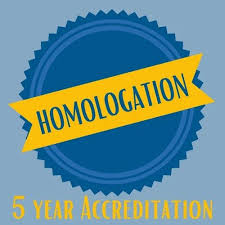In the world of business, particularly in the automotive, engineering, and manufacturing industries, a Homologation Certificate is a crucial document that ensures a product meets the necessary regulatory standards and requirements for it to be sold or used in a specific market. The homologation process involves a series of tests and approvals that a product, vehicle, or component undergoes before it is officially certified for public use. This process helps ensure safety, compliance with environmental standards, and quality control.
This article will explore the concept of homologation, the process of obtaining homologation certificate approvals, and why these certifications are essential.
1. What is Homologation?
Homologation is the official recognition or certification granted to a product, typically after it has passed a series of compliance checks. This can apply to various products, such as automobiles, industrial machines, electrical appliances, and more. In the case of vehicles, homologation typically means that the vehicle has met all the regulatory and safety standards defined by the relevant authorities.
The homologation process varies by region and industry. However, the goal remains the same: ensuring that a product or vehicle adheres to established standards and is safe for consumers. A homologation certificate is issued once the product has been tested and certified as meeting all legal and regulatory requirements.
2. Homologation in the Automotive Industry
In the automotive industry, homologation refers to the process through which manufacturers get approval to sell vehicles or components (such as engines or brakes) in specific countries. For instance, a car manufacturer seeking to sell vehicles in the European Union must ensure that the vehicle meets the European Union’s regulations on safety, emissions, noise levels, and other environmental standards. Similarly, the process would differ for other regions, like the United States, Japan, or India.
A homologation certificate in the automotive sector signifies that the vehicle, its components, or both have passed all the necessary compliance tests related to:
- Safety standards: ensuring that vehicles are safe for drivers, passengers, and pedestrians.
- Emissions standards: making sure that the vehicle meets air quality standards by controlling pollutants.
- Noise regulations: certifying that the vehicle does not exceed noise limits during operation.
- Crash testing: checking the structural integrity of vehicles in case of an accident.
Each region has its homologation requirements, so the tests and processes may differ from one country to another.
3. The Homologation Process
The process of obtaining a homologation certificate varies depending on the product or region. Below are the typical steps involved in the homologation process:
a) Product Testing and Evaluation
Before a product or vehicle is homologated, it must undergo several tests to ensure compliance with the required standards. These tests can be:
- Safety tests: Such as crash tests for vehicles or fire resistance tests for construction materials.
- Environmental tests: Ensuring the product adheres to emission and sustainability standards.
- Performance tests: To ensure that the product or vehicle functions as expected under normal operating conditions.
b) Documentation Submission
Once the product has passed the necessary tests, the manufacturer must submit comprehensive documentation to the relevant authority. The documentation typically includes test results, manufacturing details, design specifications, and any other information required to prove compliance with regulations.
c) Inspection and Approval
After the submission of documents, regulatory authorities perform a final inspection or review. This might involve site inspections, verification of documentation, and further testing if needed. In some cases, manufacturers may be required to submit their product to an independent certification body for evaluation.
d) Issuance of Homologation Certificate
Once the product meets all the regulatory standards and the documentation is approved, the homologation certificate is issued. This certificate allows the product or vehicle to be legally sold or used in the market. It may also include additional approval numbers or unique identifiers specific to the certification.
4. Types of Homologation Certificates
There are several types of homologation certificates that vary by industry and product type. In the automotive sector, these include:
- Vehicle Homologation: Certification for entire vehicles, ensuring they meet safety, environmental, and performance standards.
- Component Homologation: Certification for individual vehicle components such as engines, tires, or brakes. In this case, the components are tested separately before they can be used in the final vehicle assembly.
- Batch Homologation: Often used for limited production vehicles or prototype models, where a manufacturer can gain approval for a batch of vehicles without extensive individual testing.
In other industries, homologation certificates might include product certifications for machinery, electrical devices, or construction materials. Each of these is designed to ensure that the product complies with relevant regional or international standards.
5. Why is Homologation Important?
Homologation certificates are crucial for several reasons, as they provide both legal and practical benefits to manufacturers, consumers, and regulatory bodies:
a) Legal Compliance
One of the most important reasons for obtaining a homologation certificate is legal compliance. Without this certificate, products may not be legally sold in certain markets. For manufacturers, non-compliance can result in legal penalties, fines, or even bans on selling products in specific countries.
b) Safety Assurance
Homologation ensures that products, particularly vehicles, meet stringent safety standards. It guarantees that a product is safe for consumer use and that it poses no unnecessary risks to the environment, users, or others around it. This is especially critical in sectors like automotive and aerospace, where safety is paramount.
c) Consumer Confidence
For consumers, a homologation certificate offers assurance that a product is reliable and adheres to required standards. It helps build trust between manufacturers and consumers, ensuring that products are safe and effective. This can significantly impact a brand’s reputation and sales.
d) International Trade
Homologation is vital for international trade. For instance, a product that is homologated in one country may be eligible for export to other markets with minimal additional certification. By ensuring that a product complies with international standards, homologation opens the door to a broader market, increasing potential sales.
6. Challenges in the Homologation Process
While homologation is essential, it can also present challenges to manufacturers, especially those dealing with multiple markets. Some of these challenges include:
- Cost and Time: The homologation process can be time-consuming and expensive, particularly when testing needs to be done in multiple countries. This can be a burden for small manufacturers or those with limited resources.
- Complex Regulations: Regulatory requirements vary significantly between regions, making it challenging for manufacturers to stay compliant in multiple markets. Companies must navigate complex and ever-changing rules and regulations.
- Coordination and Logistics: For international trade, manufacturers may have to deal with different homologation bodies in each country, which can lead to delays and increased coordination efforts.
Conclusion
Homologation certificate approvals are integral to ensuring that products meet safety, quality, and environmental standards. Whether it’s in the automotive industry or other sectors, obtaining a homologation certificate allows manufacturers to sell their products legally and assures consumers of their safety and reliability. Despite the challenges that come with the homologation process, it is a necessary step for manufacturers aiming to expand into global markets and build consumer trust. By understanding and navigating the homologation process effectively, businesses can not only ensure compliance but also gain a competitive edge in the marketplace.

